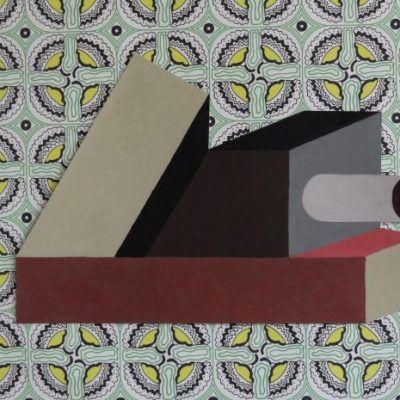As his latest work goes on display in the sculpture garden at the ICA Miami’s new home, sculptor Mark Handforth talks to Apollo about the city’s thriving art scene and why he’s so committed to the idea of public sculpture
Your new sculpture, Dr. Pepper, is among the first commissions for the sculpture garden at the ICA Miami’s new building. What does this commission mean to you?
The whole notion of having the ICA is exciting – it’s become a place for talks and discussions, attracting a young crowd of artists, but also people who are intrigued, who are thinking. It’s a privilege to be put in the middle of all that, which is where you want to be, I think, as an artist. You don’t want to be stuck in some kind of weird historic situation outside of everything.
The mission of the ICA is very important – this idea of being free and being open, an institution that hopefully all kinds of people will move through. If you’re someone like me who’s very interested in the idea of public art, it feels like a mix between an art gallery and a public space – particularly the garden area, which is really open. With the clear glass walls, the courtyard almost gets sucked right into the building. It struck me as a fascinating place to be.
How has the urban context of Miami informed this work?
I wanted it to function at day and at night. Miami is a city that really keeps going at night, partly because of the climate – it cools down – and partly because the culture is just a very day-and-night culture. The piece is a sort of industrial structure that has hanging lines of light – you take a kind of star form, but it’s a looping, twisted metal structure that becomes a hanging mechanism for these night lines, as if a star is a construction. A star is a kind of mental construction, right?
I also wanted the piece to have quite a lot of attitude of its own, an almost post-punk attitude, with a character that would hold its own in this formal context. It’s meant to draw you towards it, which is also why it stands alone and why it’s so different from each side. Sculpture operates in this odd space, where you have objects physically standing in the landscape that aren’t quite real and aren’t quite surreal – I want this piece to embrace that weirdness of function.
Which affects how we relate to sculptures…
It does. Then we have this other odd relationship with them, which is something I like about art in public spaces – that, peculiarly, the public own these pieces too. You find that people are all over them, and also do funny things with them. When you’re at Euston Station, people aren’t sitting on other peoples’ cars eating their sandwiches, they’re sitting on the Paolozzi sculpture. I think there’s an understanding that sculpture is somehow part of the public realm.
Dr. Pepper (2017), Mark Handforth. Installation view at ICA Miami

What does the ICA Miami bring to the city that it doesn’t already have?
I grew up in London. When I was a teenager, the ICA there totally opened my mind – a place where you could see films and hear talks and see work that wouldn’t otherwise be shown at the time. I suppose that’s my hope for the ICA Miami too, that it becomes this place where all sorts of debates that otherwise might not happen, will happen, and where people feel free to discuss ideas. I think that that’s very important, especially now that Miami has been through this exponential expansion, and is twice as big as it was when I came here. Florida has become the third biggest state in the Union, there’s been a huge injection of money and there’s a massive mixed immigrant population. There’s a sort of choice at this point about whether this city becomes a fascinating, cosmopolitan, polyglot place, or drifts away to become another bland, mega-city. Now’s the time to grasp all the energy that’s here – and institutions like the ICA Miami will allow that to happen.
Is the city more hospitable to artists than it was when you moved here 25 years ago?
Definitely. When I moved here everyone thought it was a joke, leaving London to live in Miami. At the time, it was regarded as quite a tricky city, and there had been all this drug stuff and violence in the early ’90s. At first I lived on Miami Beach, and at that time it was very much about club culture and night-for-day life – I grew up in a pretty traditional environment in London, so this was a different way of living. The city didn’t have all the classical markers of culture at that point, but instead had strange things like lampposts and highways and signs. Those were the things – as well as the artificial light – that struck me and have inspired my work.
I think now Miami has become accepted by the rest of the world as a place that is culturally interesting. For artists living here, there’s actually the possibility that curators will come and work will be seen and shows will happen. Art Basel is a double-edged sword, because it does swallow a lot of energy, but at the same time it brings a lot of focus, and it makes clear that you can do things here as an artist or a curator. It’s hard for the city government to deny the fact that the biggest money-maker in the city is the art fair – it forces them to think about culture.
You’ve worked on many commissions for public spaces. How important is the public aspect of art to you?
I’m a huge believer in public art. I’m not sure that artists are here just to put things on the wall of someone’s fancy house or in the white box of the gallery – it seems much more vital to get out on the street. I want to start a conversation with people, and make art that becomes part of their lives.
The ICA Miami’s new home is now open. To find out more, visit www.icamiami.org.
From the November issue of Apollo. Preview and subscribe here.



